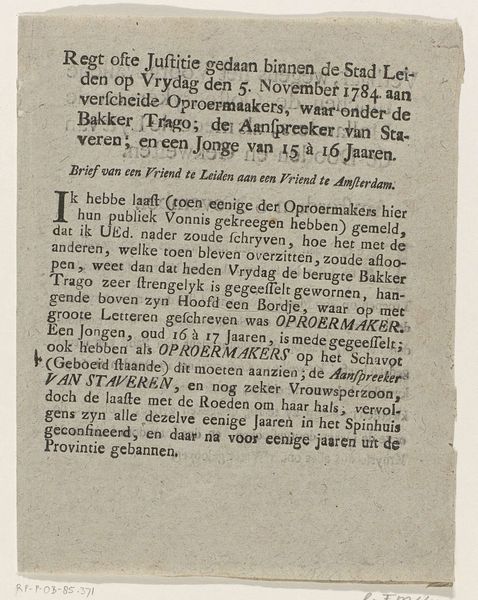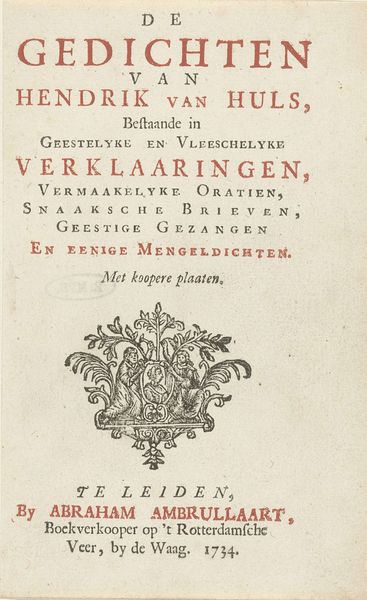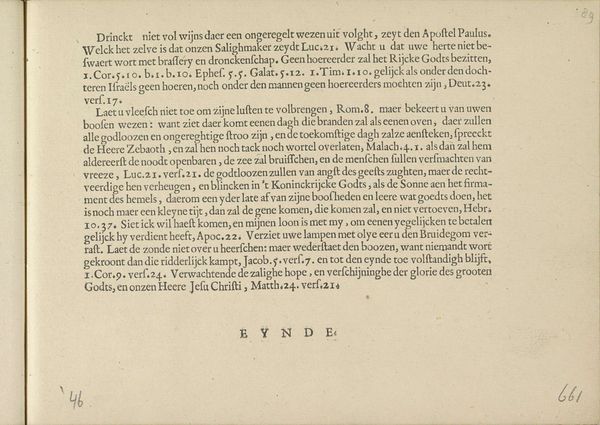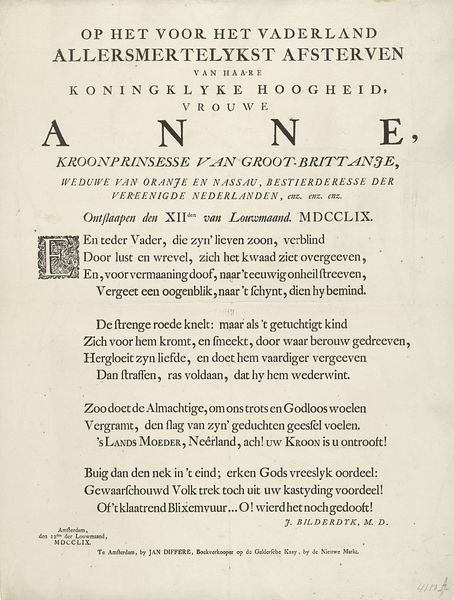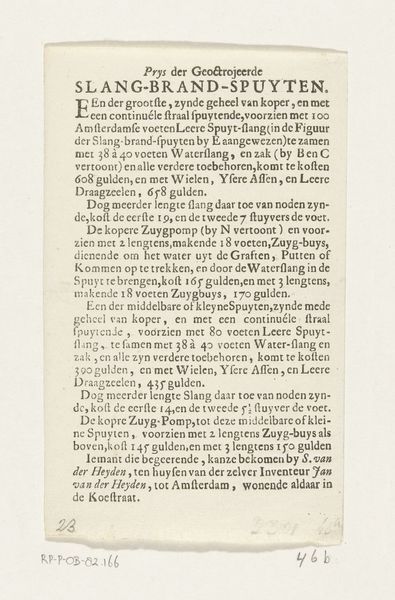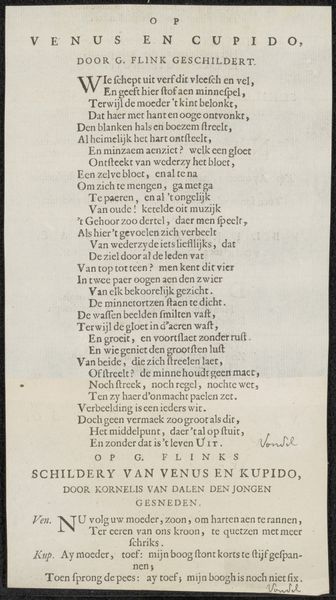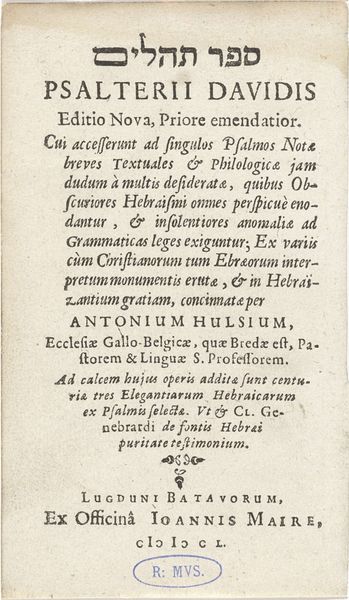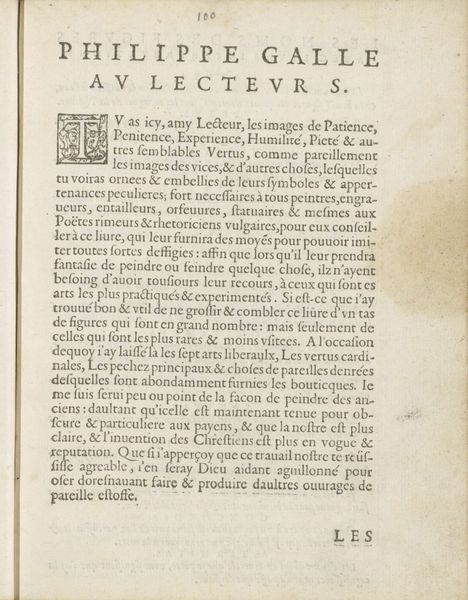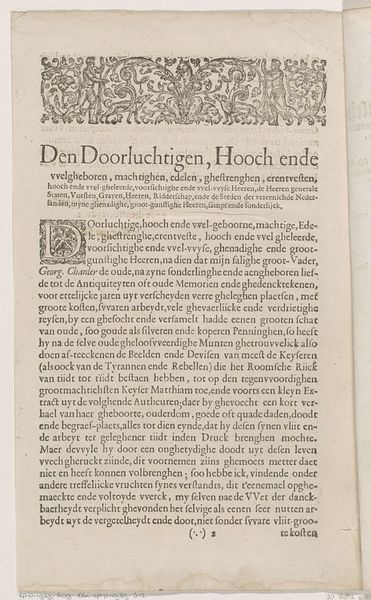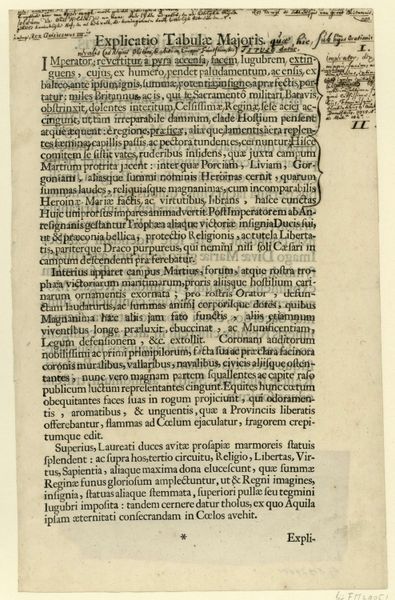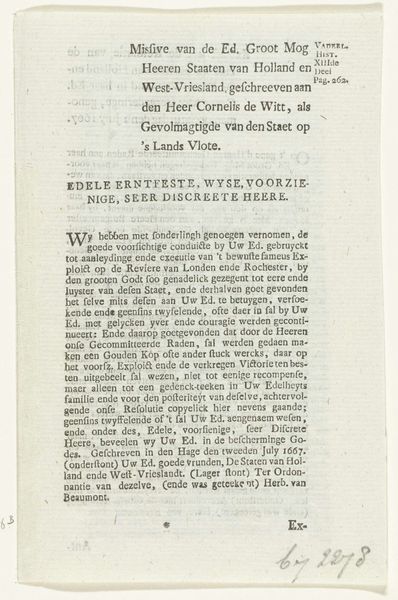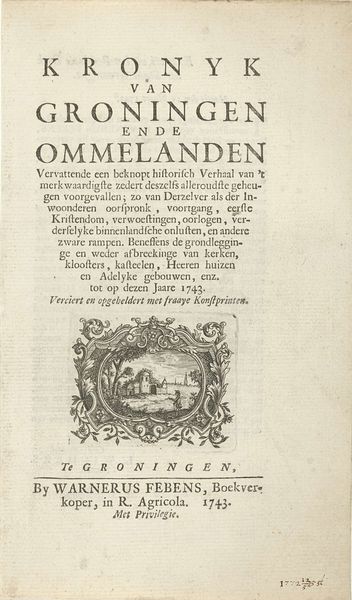
print, typography
#
dutch-golden-age
# print
#
typography
Dimensions: height 310 mm, width 200 mm
Copyright: Rijks Museum: Open Domain
Curator: We're looking at a print from 1787 called "Signalement van Lucas van Steveninck." Editor: It feels very austere, very matter-of-fact, almost… forensic. The typography is straightforward, creating dense blocks of text that lack visual relief. Is it a wanted poster? Curator: Indeed, it is. This document serves as both an advertisement and a "signalement," essentially a description or wanted notice. The text reveals that Lucas van Steveninck, a medical doctor from Middelburg, is suspected of involvement in disturbances occurring between June 29th and July 2nd, 1787. Editor: Disturbances indeed. The town authorities offer a thousand guilders for his live capture and delivery to justice, ensuring the informer's anonymity, of course. But the "signalement" part; that’s amazing. I see such descriptive detail… height, complexion, eyebrow color. It details his clothing. Curator: The specifics construct an identity based on external features—his pale complexion, brown eyebrows, deeply set eyes, the way he holds a walking stick. Notice the power imbued within visual attributes, even language itself, becomes a tool of control. Editor: Precisely! There’s a sense of cataloging, stripping away the human to create a series of objective… markers. It seems this was a conscious choice about a system being deployed against an individual, not an objective accounting of characteristics. That phrase at the end too; he is "speaking rapidly in the Dutch language". Interesting detail, maybe meant to portray anxiety, as opposed to refined rhetoric. Curator: Exactly, it's about how perceived deviations from societal norms, even speech patterns, become points of suspicion and ultimately, tools for marginalization. Van Steveninck became a figure defined by these visible markers. Editor: Considering it, this "signalement" says so much about that society, its fears, its control mechanisms…it goes beyond identifying an individual, it creates one. Curator: Yes, visual description transforms into a potent form of symbolic branding—a warning, shaping perceptions beyond objective identifiers. Editor: A rather stark reminder that appearance and language can become incredibly powerful instruments for both control and resistance, influencing the course of history.
Comments
No comments
Be the first to comment and join the conversation on the ultimate creative platform.
